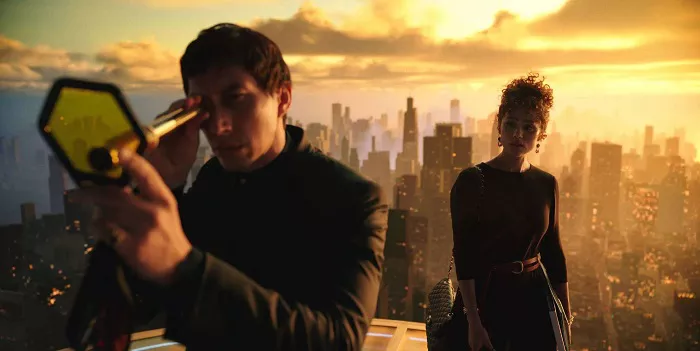Francis Ford Coppola, the legendary director known for iconic films like The Godfather and Apocalypse Now, has made a triumphant return to the big screen with his latest offering, Megalopolis. This science-fiction drama opened in theaters nationwide on September 27.
Set against the backdrop of a deteriorating futuristic metropolis named New Rome, the film weaves together elements from various historical periods, ranging from the Roman Republic to the Bush Administration. The narrative centers on Cesar Catilina, an idealistic architect portrayed by Adam Driver, who aspires to create a dream city called Megalopolis.
“I will build a city that people can dream about,” Catilina declares, igniting tension with Mayor Frank Cicero, played by Giancarlo Esposito, while intriguing the mayor’s daughter, portrayed by Nathalie Emmanuel. This clash over the future of New Rome generates a tapestry of political intrigue and introduces a vibrant ensemble cast, crafting a narrative that is as chaotic as it is moving—hallmarks of Coppola’s ambitious filmmaking style.
In an interview with NPR, Coppola revealed that the concept for Megalopolis has been brewing in his mind since the early 1980s during his work on the musical One from the Heart. The director personally financed the project, pouring in $120 million and selling a significant portion of his renowned winery to bring his vision to life. This dedication underscores the uncompromising nature of the film.
Megalopolis stands out as a singular project within Coppola’s filmography and in contemporary cinema. Unlike The Godfather, which masterfully blended myth with a specific cultural context, Megalopolis launches from myth and continues to layer it throughout its extensive 2-hour and 18-minute runtime. Coppola employs an array of cinematic techniques, resulting in a bold, satirical narrative that may feel excessive in its ambition.
Viewers may find themselves overwhelmed by the film’s elaborate world-building and its dense exploration of themes related to human evolution and historical trajectories. However, beneath this complex surface lies a genuine emotional core that surfaces powerfully in the film’s conclusion, prompting audiences to reconsider the entire narrative.
“Is this society the only one that’s available to us?” Catilina questions at a pivotal moment, prompting reflections on Coppola’s ideals about humanity and the potential of cinema. The film is an introspective endeavor, urging viewers to aspire to higher ideals, particularly poignant coming from the 85-year-old director, who reflects on his mortality. The film is dedicated to Coppola’s late wife, Eleanor, who passed away earlier this year before the film’s debut at the Cannes Film Festival.
Coppola’s work encourages a reevaluation of societal foundations and challenges audiences to consider their role in shaping the future. While many contemporary filmmakers lean toward nostalgia, Coppola boldly explores future possibilities. Despite its flaws, Megalopolis captivates and resonates, earning its place as one of the standout films of the year.
Related topic:
Did Anyone Survive The Titanic By Swimming?
Who Died in the Titanic Movie? [Revealed]

